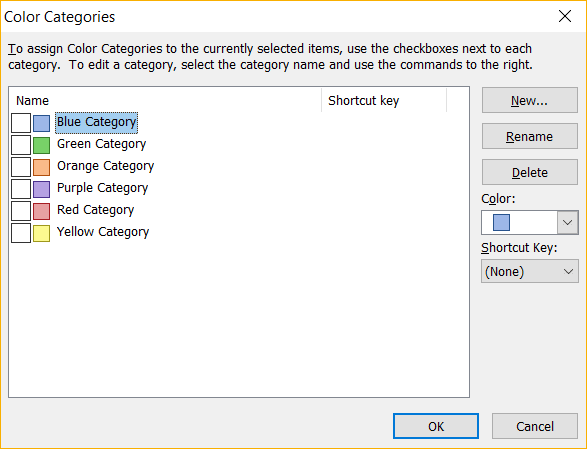

Whether you’re using an email client (like Microsoft Outlook or Apple Mail), a web interface (like Gmail or Yahoo! Mail), or a mail app on your phone, search is your friend.
#OUTLOOK FOR MAC TAGGING NAMES ARCHIVE#
RELATED: The Best Way to Organize Your Emails: Just Archive Them Let’s Get Searching We’ve covered Smart folders, and we know they work, but of the three email applications we’re covering here, Apple Mail is the least-suited to a single archive method. Although those aren’t as simple or quick as tags, there is a system for you to use to group your email. However, in their defense, they do push Smart Folders hard. Tagging in Apple Mail is known as “flagging.” Unlike in Outlook, you are limited to the existing seven flags, so there’s no getting away from it: Apple hasn’t done very well here. So, get labeling and watch your mailbox become a completely different-and better-place. Labels have become an intuitive and integral part of the Gmail experience, mostly because you can’t add folders. You can also create filters to label emails automatically based on whatever criteria you want.

Like in Outlook, you can create as many labels as you want (sort of-there’s a limit of 5,000, after which Google says you might experience performance problems, but few people ever do) and assign them colors. In Gmail, tagging is called “labeling,” and it works in both the web and mobile apps. Then you get the benefit of tagging and the benefit of a folder view. You can even change your Archive folder view so that it groups mail by categories, which will mimic a folder structure. When categorizing your mail, you can categorize everything in a single folder by selecting all the email (using the Ctrl+A keyboard shortcut), and then selecting your category-or categories-of choice. Categories haven’t come to the Outlook mobile app yet, so you’ll have to do your categorizing in the client or the web app. Without reading anything, you’ll know that every purple email, calendar event, task, note, or contact is associated with that project. For example, if you create a category for a project and give it a specific color-let’s say purple-you can tag every related item with that category. This not only makes it easy to search but also highlights your Outlook contents with a color. In Outlook, tagging is called “categorizing.” You can create as many categories as you want, assign them colors, and then apply them to anything in Outlook-emails, calendar events, tasks, notes, and even contacts. Even if you end up keeping folders, tagging is so useful that we recommend doing it anyway. This way, you can be sure it’s easy to find again.īest of all, tagging is simple in (almost) every modern email app. You can tag in bulk, so if you have a folder for a client, you can tag every item in there with the name of that client before moving it into your archive. If you’re moving from a folder-based system to a single archive, tagging is the key to being able to find things afterward. You just add the appropriate tags to the email, and then you can easily find it again, whether you want to find emails related to that vendor, client, or so on. With tagging, you no longer have to decide if that mail about a vendor issue on a client project goes in the vendor folder, client folder, project folder, or lessons learned folder. The single biggest benefit of using tags instead of folders is that you’re not forced to pigeonhole an email into just one folder. For example, in Gmail, just click the Archive button.īut, if you’ve got no folders, how do you arrange your messages for easy retrieval? The answer is simple: tagging. Don’t waste time moving messages into folders in your email client-put everything in one archive folder. So, people create one extra folder, and then two, and then loads! Use these techniques instead of folders to organize your archive. The problem with keeping email in one large archive is finding specific messages again.


 0 kommentar(er)
0 kommentar(er)
